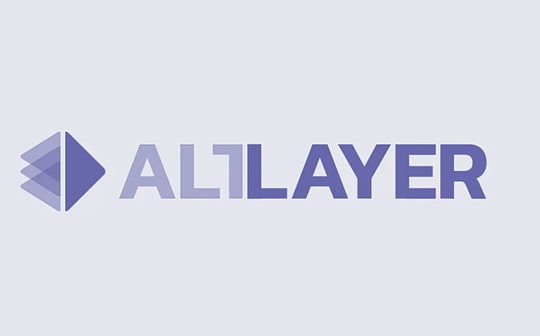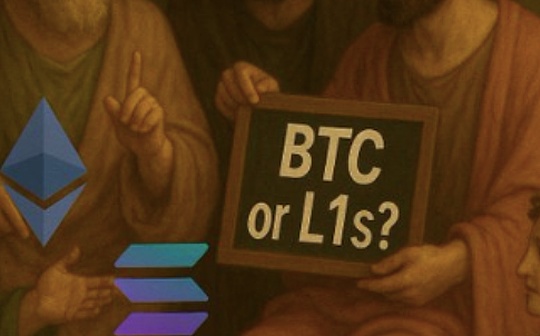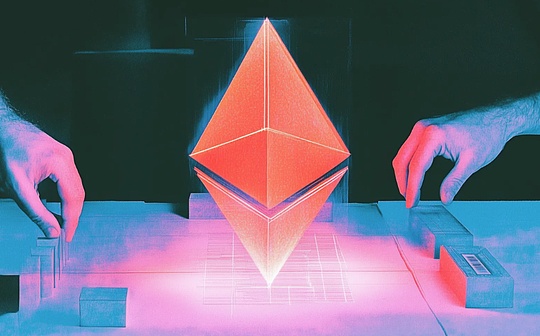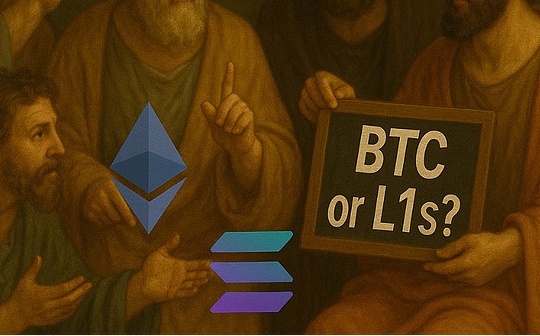
Author: Dewhales Research Source: Substack Translation: Shan Oba, Bitchain Vision Realm
Altlayer has taken a long way from the aggregation box ZK solution to the launch of re -pledged technologies to expand and accelerate the Web3 process.Let’s explore this theme through actual examples!
Table of contents
-
introduction
-
Rollup Center
-
Rollups pledged again
-
Related participant
-
4.1 Partners and projects using Altlayer Technology
-
4.2 Integrated example
-
Token economics
-
Who is behind Altlayer?
-
supporter
-
in conclusion
-
SDK for developers who want to manage Rollups by themselves
-
No code instrument board, allow anyone to use several simple clicks to generate a customized execution layer in a few minutes
-
Executive level final confirmation: The content of the trading pool is collected and organized by the block producer.These blocks submitted to the consensus agreement.Once the consensus agreement verifies and accepts these blocks and the transactions it contains, they get the final confirmation at the execution level.
-
Authentication level final confirmation: Once the block produced and verified by the block producer and consensus protocol is verified by the verification person, the verification level will be finalized.Further and stronger final confirmation occurs when more verifications can confirm or reject the update, and more confirmation increases the possibility of correctness.
-
The rollup level finally confirmed that the block that was removed through the arbitration consensus will go through the inquiry stage, and anyone can run their verificationrs and participate in the verification.If there is a difference in the proposal on the chain, the challenger can make a challenge.Successful challenges will invalidate subsequent blocks and trigger the state back.Unsuccessful challenges can cause pledge of challengers to be reduced.
-
Quickly launch a fast and scalable rollup that is guaranteed by Layer 1
-
Use rollup within the required time to prevent the blockage of layer 1
-
Treatment Rollup by “Ending and Setting” on Layer 1
-
VITAL (AVS for decentralized Rollup state verification)
-
Mach (for fast and final AVS)
-
Squad (AVS for decentralized sorting)
-
PolyHedra: ZKBridge from PolyHedra Network has made significant progress in the blockchain industry, providing a stable, efficient and secure cross -network interaction agreement, suitable for various Layer 1 and Layer 2 networks.Through ZKBRIDGE’s integration, Altlayer’s ROLLUPS can now ensure that it is seamlessly compatible with more than 30 different Layer 1 and Layer 2 networks.As part of the cooperation, Altlayer plans to join Polyhedra AVS by pledge to support Bitcoin ZKBridge.
-
Injective: The Mach that integrates Altlayer is used for Inevm, so that the smart contract deployed and integrated into EVM bytecode in the Injective ecosystem, and at the same time ensure the combination of WASM/EVM.Altlayer’s Mach will provide the security of re -pledge in Inevm, which is conducive to applications running on Inevm.
-
BrevisIt is a zero -knowledge association processor that allows smart contracts to read and use the complete historical data of any chain, and perform custom calculation in a non -trusted manner.Using Brevis, developers can create various data -driven functions.Altlayer’s re -pledged Rollups will be enhanced with the Brevis collaborator.By providing Brevis collaborators, developers on Altlayer can reliably execute historical data computing in the chain and build a decentralized application of data -driven data -driven data -driven data input.
-
SOVEEIGN SDKIt is an interactable and scalable Rollup packaging ecosystem that can run on any blockchain.Their SDK is an open source toolkit to create ZK and optimistic Rollup packets.SOVEIGN SDK was used by protocols such as Haun, 1KX, Eigenlayer, and Celestia.In Altlayer, Sovereign is integrated to promote the deployment of the Rollup package in the Rollups-As-A-Service (RAAS) ecosystem.
-
HyperlaneSimplify the deployment of functional compatibility in its blockchain.Through non -licensed interaction, users can deploy Hyperlane anymore anymore.As a result, the founder and developers of the blockchain can enjoy greater autonomy and quickly make their products across the chain available.Altlayer cooperates with Hyperlane to provide non -permitted compatibility in the Altlayer ecosystem.In addition to the built -in merger bridge connection, items using Altlayer technology stack can also use Hyperlane to deploy and communicate cross -merger services.
-
CelestiaIt is a modular blockchain that is used by Altlayer for data usability (DA) to solve the challenge of data availability and reliable state verification.Altlayer is configured to support the DA layer that supports Celestia, as one of the Rollup options created by the Altlayer merged instrument panel, thereby reducing the cost of data availability.As part of integration, Altlayer developers will extract chain data from Celestia, compress and upload them to the Celestia network.This will allow the use of CeleStia data to completely rebuild Rollup.
-
Nebra: Altlayer cooperates with NEBRA to integrate its advanced general -purpose proof aggregation (UPA) technology into its Rollup solution.NEBRA’s UPA is the first ready -to -produce converger agreement to achieve more than 10 times the cost of GAS cost and combination of zero -knowledge certification verification.
-
Orbiter FinanceAs a bridge between Ethereum and L2 Rollups.ORBITER cooperates with Altlayer to solve the liquidity fragmentation problem of L2 through functional compatibility tools.
-
Espresso SystemsIntegrated into the Altlayer technology stack, adding Espresso Sequencer, which is a solution for decentralized sorters.Developers can choose whether to use Altlayer’s decentralized verification solution to deploy its Rollup package in the Altlayer technology stack and/or Espresso Sequencer.This partnership provides a simple method for application developers to start the scalable and customized L2 layer, and at the same time ensure that the future users of the merging package benefit from the attributes provided by decentralized sorters.
-
RadiusThe decentralization of the Rollup package was redefined by preventing MEV, reviewing resistance and financial stability.Together with encrypted sorting, this protects users from review and MEV risks.With the integration of Radius and Altlayer, developers will find that users’ friendly and efficient Altlayer platforms create dual advantages of creating Rollup packets, as well as encrypted sort provided by Radius.
-
Double jump.tokyo: A leading Japanese blockchain game and NFT startups, collaborated to integrate Altlayer’s comprehensive technology stack into Oasys, a blockchain created by a group of developers (including Double Jump.tokyo).It is worth noting that Altlayer generally accepts the WEB3 game narrative and cater to customers in the field.Altlayer provides game developers with two types of Rollup packets: temporary and lasting.Temporary Rollup packages are very suitable for event -driven applications that experience surge in rapid demand in a short period of time, such as mini games or turn -based games.On the other hand, lasting ROLLUP package is most suitable for games with a longer life cycle.It is worth noting that the Altlayer’s Rollup packet (Flash Layer) has previously been used to host a full -network game, such as Dark Forest, attract hundreds of thousands of transactions every day.Altlayer positions Flash Layer as a solution for games.
-
Arbitrum orbitIt is a non -licensed solution recently announced by the Arbitrum Foundation that enables developers to create a completely customable Layer 3 that is guaranteed by Arbitrum One.Altlayer has begun to integrate support for Arbitrum Orbit and its technical stack on its no -code start instrument panel, and will be ready in the second quarter of 2023, becoming the first ROLLUP package to support Arbitrum Orbit.
-
Deri ProtocolIt is a method of using DEFI transaction derivatives: hedge, speculation, arbitrage, all on the chain.Through Deri Protocol, the transaction is performed according to the AMM paradigm, and the position is marked as NFT, which is convenient for integration with other DEFI projects.
-
AutomataIt is a blockchain middleware provider, supported by Binance Labs, Jump Crypto and other support.They recently launched a modular verification layer, where the verification is fully carried out on the chain and used for the calculation of the agreement.
-
ComethIt is a French game studio.They have cooperated with well -known customers such as French National Lottery Corporation (FDJ), Lacoste, Fanlive Rugby and Life Beyond Studios to provide Web3 demand for them.
-
Economic guarantee: ALT tokens will be used with re -pledged assets to provide economic guarantees.If malicious behavior is detected, this guarantee can be cut.
-
Govern: ALT token holders can vote for governance decisions.
-
Protocol incentive: The operator in the Altlayer ecosystem can earn ALT token as a reward through its service.
-
Protocol fee: Network participants will need to pay ALT tokens for intranet services.
-
real: Representative “ALT tokens”, which is an ERC20 interest accumulated tokens, recorded the holder’s alt pledge, and accumulated rewards accumulated through compound interest.Realt tokens are issued to users who pledge Alt in the main pledged pond.It is a reward cumulative tokens, cumulative pledge rewards.
-
stalt: This is an ERC1155 token, which represents the pledge of the holder in the main pledged pool.Stalt token can be manually converted to Realt through the portal.
-
Yaoqi JIA (Jia Yaeqi), CEO: In 2019, Yaoqi was selected as Forbes Asia “30 Under 30”.He obtained a Ph.D. in computer science from the State University of Singapore National University in 2017.Yaoqi’s leadership designed and created the first open blockchain platform with complete fragmentation functions, including networks, transactions and smart contracts.He also launched a Straitsx stabilization coin project for Southeast Asia with Xeers, and participated in blockchain projects such as Mindshare, Singapore Exchange, and HG Exchange.Before joining Zilliqa, Yaoqi worked at Parity Technologies.
-
AMrit Kumar, chief operating officer: AMRIT has a master’s degree in information system security, cryptography and coding.He obtained a doctorate in computer science from the University of Glerno Bill, France, and worked at the Inria Information Laboratory (Inria).He co -founded and served as the chief investment officer of Zilliqa, and is currently the chief operating officer of Alt Research, a research company related to Altlayer.
-
Tan jun hao, the person in charge of product engineering: Former Zilliqa co -founder and core developer, Tan Jun Hao is very active in the Zilliqa community, involving a technical and DEFI ecosystem and its state.He has been participating in the field of computer security since 2019. He has a bachelor’s degree in computer science from the National University of Singapore and focuses on information security.
-
Antonio nunez, the person in charge of platform development: Antonio has a bachelor’s degree in physics and computer engineering from the University of Athens, the University of Athens, and has rich development experience in various languages and tools since 2006. It is a former Zilliqa co -founder and senior engineer.
-
Dorothy Liu, the person in charge of growth: Dorothy has a bachelor’s degree in business management and a master’s degree in marketing.She has served as a consultant in Deloitte and vice president of OSL.With the experience of well -known companies such as Synthetix and Hashkey Trading, Dorothy has an excellent understanding of the mutual layer mechanism of the blockchain.
-
Aparna narayanan, the person in charge of the communication: Previously, he served as public affairs and strategic communication in APCO Worldwide. Aparna has a bachelor’s degree in economics, management, political science and public policy.She entered the encryption field in 2019 and grew from community manager to the person in charge of Zilliqa.
1. Introduction
In the development of continuous development of the blockchain, scalability and customization have become the main focus of application developers.With the popularity of ZK Rollups and Optimistic Rollups, it is clear that developers can expand solutions to their applications while maintaining flexibility and control.
In recent years, ZK Rollups and Optimistic Rollups have made significant progress in the blockchain field, because they can significantly improve the throughput and efficiency of existing blockchain (such as Ethereum).However, although they are full of hope, these Rollup technologies also bring their own series of challenges, especially in terms of accessible, customized, sorters’ centralization, soft ultimateness, and liquidity fragmentation.
This is the land of Altlayer.Different from the existing options selected by the currently available builders, Altlayer provides ROLLUPS-As-A-Service services for developers who seeks their Rollup solutions.RaaS service allows developers to directly manage their Rollups, providing high customization and control over their blockchain infrastructure.
However, what really makes Altlayer is different is its newly pledged Rollup framework, which will be pledged into Rollups.The combination of RaaS and the re -pledged Rollup framework, so that anyone (including individuals with almost no coding experience) can create their own custom blockchain execution layer in a few minutes, and bring extra security and go to their RollupCentralization.This significant feature has brought about the gap between technical users and non -technical users, making Altlayer a optional solution for the widespread use of builders.
In this article, we will explore the mechanism and potential of Altlayer in depth, and explore how it becomes Rollups-As-A-Service solution in a rapidly developing blockchain field.
2. RollUP Center
Altlayer is a Rollup-As-A-Service protocol that allows developers to start their own Layer 2 (imagine starting a version specially used Optimism, ZKSYNC, Arbitrum and other versions).Altlayer provides:
Basically, Altlayer is a decentralized Rollup center that allows individuals to start their own L2 solution according to their needs.However, problems such as available execution methods, rollup speeds, rollups of general/dedicated use may occur.
Altlayer allows the startup ZK Rollups and Optimistic Rollups, which have EVM, WASM or other running, and are used for general purposes or applied specific purposes.Users can completely customize their Rollup according to their needs and preferences.
>
As mentioned above, Altlayer allows quickly deployment within a few minutes, and the process is similar to deployment on the general chain.Altlayer’s Rollups does not need to be guaranteed by hundreds of verifications (such as COSMOS SDK) because they use underlying chain (Layer 1) as a safe layer.
Altlayer takes a modular design as its core, allowing end users to customize its Rollup solution based on its preference.This flexibility extends to the choice of environmental environment, including EVM, WASM and other options.In addition, users can freely choose their preferred data availability layer, whether it is L1 blockchain or data layer like Celestia.Altlayer also allows users to choose its preferred settlement layer, such as Ethereum or Arbitrum One.
>
The main problem faced by most rollup is the decentralization of the sorter (the sorting and processing of transaction).However, Altlayer is operated by a decentralized sorter network.These sorters are selected from a sorter network called Squad, based on their pledge and some randomness.We will discuss Squad in detail in the next section.
Finally, a core feature worth mentioning is the finality of the layered.Traditional blockchain is usually classified as the final confirmation or not final confirmation.However, Altlayer finally adopted a more detailed approach to the block and implemented a layered system.This layered system allows end users to determine the final state of the transaction based on their choice.As the block passes through these different final confirmation layers, the confirmation of the final confirmation gradually increases.At the execution level, the final confirmation is the lowest, and the apex is reached at the Rollup level.
The final confirmation process of Altlayer includes three different levels: execution levels (suitable for low security budgets), verification levels (suitable for medium security budgets) and ROLLUP levels (suitable for high security budgets).
Altlayer also offers another type of Rollup, called Flash Layers, which are more suitable for solving scalability problems.Flash layers is a one -time, customized Rollup, and has optional fraud proof.
Through Flash Layers, DAPP developers can::
This significantly optimizes the resource utilization, because the execution layer and its resources are called when DAPP only experienced high flow with Layer 1 limit.When demand is reduced, DAPP can be seamlessly returned to Layer 1 to operate.
Potential use cases include NFT casting events, games, activity tickets, etc.
>
3. Rollups pledged again
This is a new concept proposed with EIGENLAYER.It contains a set of active verification services (AVS) created as a given ROLLUP bundle package on demand.These AVS provides three key services for the RollUP application: decentralized sorting, status correctness verification and faster finality.This helps Rollup’s decentralization, security enhancement, and interoperability between ROLLUP.The updated rollup bundle package consists of three modular components, which are called:
>
Let’s take a closer look at these components:
VitalAs an integrated verification layer of the rollup bundle package.It consists of an operator registered by a network AVS, which verify all the new states proposed by the Squad operator.Vital operator detects an invalid state root and can use the two -point protocol to challenge the Squad operator.Basically, Vital is an operator network that verifies the new state.Unlike the preliminary confirmation provided by Rollup sorters, Vital provides a much stronger confirmation because the economic incentive behind it.This allows assets to withdraw immediately.Vital can also be used in conjunction with optimism and ZK proof. Among them, Vital operators can ask Squad operators to generate ZK proof for controversial root root.
>
MachIt aims to solve the slow ultimate problem of rollup. By verifying the Rollup block and ensuring that the block is effective according to the state of the Rollup, it is effective.Once the invalid block is detected, the Mach operator will issue an alert.If there are enough operators to agree to the alarm, it can upgrade upstream DAPPS.The Mach service will be provided to end users as an RPC endpoint, and whether the specific rollup block is considered to be the final.This RPC endpoint can integrate to any aggregate decentralized application, providing faster and more reliable confirmation.Mach will also help exchanges, bridges, light clients and other streaming media access to the Rollup status and block to provide auxiliary services to provide their products and services.
>
SquadThe node operated by Eigenlayer AVS operator can register its interest as Rollup sorters.Once the required number of sorters pledge the minimum mortgage, these sorters can start sorting transactions for rollup.In order to promote sorters’ discovery, Squad is designed as a node network. Any EIGENLAYER AVS operator can join, effectively acting as a complete blockchain with WASM and EVM execution environment.Nodes in Squad are called verifications, which are typical in any POS network.
>
4. Related participants
4.1 Partners and projects using Altlayer Technology
Altlayer has many partners, most of which are integrated, involving the use of Altlayer’s technology stack or integrated technology stack of other projects into Altlayer.This is a powerful instructions that provide Rollow-As-A-A-Service products.As of September 2023, Altlayer has multiple partners and integrations: EIGENLAYER, SOVEEIGN SDK, Hyperlane, Celestia, ORBITER Finance, Espresso Systems, Radius, Double JUMP.TOKYO, Arbitrum OR Bit, and other items related to Altlayer include:Another World, My Square, Connext, MatchBox, Oveit, Benddao, Skyark, Port3, Degame, UFORICA, Evolv, Chirpley, Stratisx, RNS.ID, 3UP, Evolv, Fobo.Club, AUB Tomata, MySquare NFT, Taskon and DF Archon.As of the end of May 2024, Altlayer has a large number of partners and integrations, and will issue blog announcements every week that there are 120 spans of various types of projects in the ecosystem.
>
4.2 Integrated example
EigenlayerIt is an Ethereum pledge agreement.Altlayer and Eigenlayer collaborated on the concept of pledged Rollups, as mentioned earlier.Altlayer’s re -pledged Rollups running on Eigenlayer’s main web include:
>
5. Tokens
The function of Altlayer tokens includes the following aspects:
In addition, Altlayer also provides token packaging -Realt and Start:
>
6. Who is behind Altlayer?
The Altlayer team is mainly composed of Zilliqa’s core team members and developers. Most of their experience can be traced back to 2017, indicating that they have a strong technical background.In addition, team members enjoy a good reputation in the encryption industry.
7. Supportr
Altlayer mainly receives supporters of the Tier 1 category and personal support with good reputation in the encryption industry: Polychain Capital, Breyer Capital, JUMP, Binance Labs Fund, Hashkey Capital, Bankless Ventures , Primitive Ventures, TRGC, MASK,OKX Ventures, DAO 5, and well -known characters such as Sean Nevile, Gavin Wood, A16Z ordinary partner Balaji Srinivasan, Synthetix’s Kain Warwick, MEssari Ryan SELKIS, Synthetix’s JORD An Momtazi and Bodhi Ventures.
>
8. Conclusion
In the previous cycle of the encrypted industry, the project aims to increase fragmentation. In the competition for liquidity and users, we will strive to occupy the dominant position in the market.However, more and more people are now aware of the importance of cooperation.Each project has its advantages and disadvantages, and focuses on specific user categories and developers.In recent years, a clear trend of aggregation has appeared -DAPPS, different strategies, liquidity and modular blockchain.
Altlayer is a project that is in line with the current era. It aims to provide developers with the greatest convenience. It does not need to spend a lot of resources, not only to start its own network, but even to implement it from SDK.In addition, Altlayer provides its own actual technical solution for starting Rollups and provides the ability to use other technologies (including modular technology) to position its product as Rollup-As-A-Service.
In addition, Altlayer successfully integrated with new technology and included it into its technology stack.This is reflected in the integration of Eigenlayer -Altlayer quickly provides AVS -based solutions and seamlessly integrates its Rollups products into it.







